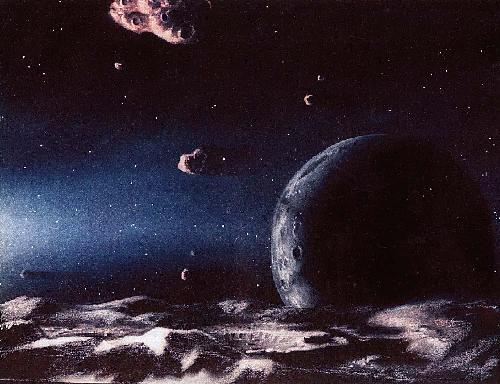| DISTANT COMET C/2017 K2 |
|---|
2017 paper | 2018 paper | 2019 paper | HST Press Release | Comet Home Page | Kuiper Belt Home Page |
Summary
We observed K2 with Hubble Space Telescope at the highest angular resolution. Instead of water, we conclude that the activity is powered by the sublimation of a supervolatile ice. Unlike on most (near-Sun) comets, supervolatiles can persist at the surface of K2 because it is freshly arriving from the frigid Oort cloud,
where temperatures are as low as 10K above absolute zero.
C/2017 K2 is a Long-Period Comet, from the
Oort cloud recently
discovered pre-perihelion at 16 AU from the Sun. Its special significance is that it is so far away and, as a result, so cold, that ice on the nucleus cannot sublimate. It is even so cold that amorphous water ice cannot crystallize, meaning that the two leading processes driving cometary activity cannot explain the activity we measure in K2.
Caption: (image): Long-period comet P/2017 K2 imaged from the Hubble Space Telescope on 2017 June 27. (diagram): Schematic showing the position and orbit of K2 relative to the plane of the solar system. Credit NASA STSCI, David Jewitt
Click on the images to see larger versions.
Images from the 2017 paper: Figure 1 Figure 2 Figure 3
Images from the 2019 paper: Figure 1 Figure 2 Figure 3 Figure 4 Figure 5 Figure 6 Figure 7 Figure 8 Figure 9 Figure 10
2017 paper | 2018 paper | 2019 paper | HST Press Release | Comet Home Page | Kuiper Belt Home Page |
David Jewitt
 |
 |
|
| Comet | Jewitt | Kuiper |
|---|